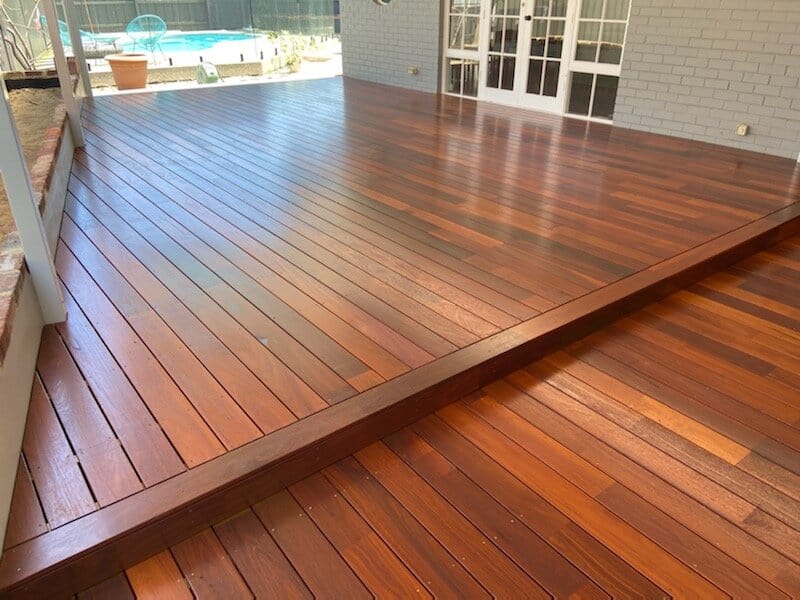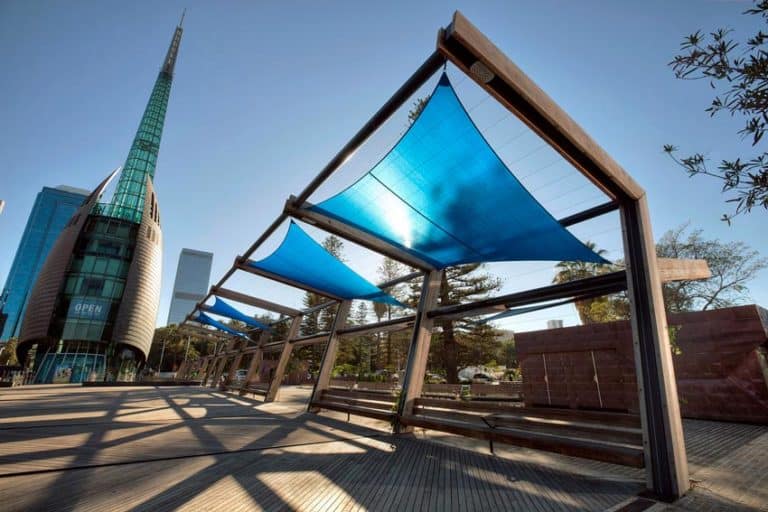Outdoor living at home is all about relaxing on your deck. Despite how sturdy or strong your deck may appear, with the extreme weather conditions in Australia, it’s easy to see why an annual deck inspection is a smart idea.
What contributes to an unsafe deck?
Decks are always enduring rough conditions such as rain, sun, and extreme temperature fluctuations. Throughout its service life building timber can be affected by:
- Insects & Termites
- Water and Rot
- Coastal Effects – Salty air corroding steel components
- Heavy Loads – Spas, furniture, barbeques, and people
Safety checks
Railings

Railings should be secure, especially if your deck is off the ground, although this is less common in Australia. Ensure they’re strong enough to keep people safe and check that the gap between pickets is no more than 100mm apart, to prevent small children and pets from squeezing through at your home.
Stairs
Check that any supporting structures for your stairs such as railings or handrails are held firmly in place. Then check the main structure, the risers, and the treads to be sure they are sturdy, attached, and not decayed. Keep stair pathways clear of any items that can present a tripping hazard.
Decaying Wood
Rot is timber’s worst enemy. Check several different areas of the deck for decaying timber:
- Ledger board
- Support posts
- Joists
- Deck boards
- Railings
- Stairs
Inspect any areas that never get the sun and consistently get wet or are in contact with metal fasteners. The timber should be solid and vacant of small holes, which may indicate insects.
Flashing
The leading cause of deck failure is rot; this is usually the result of timber being consistently wet due to missing flashing that removes water from these areas. Ensure the flashing is performing correctly and is secured in place.
Fasteners
Fasteners include timber hardware like screws and anchors on the ledger board. A rusted or corroded fastener can cause deterioration in surrounding timber so consider replacing it.
The deck should look even and should not be sagging or move when tested. If the deck shifts during regular activity it is a sure sign that it is deteriorating.
Timber Coating

Make sure your deck isn’t slippery, or its layer of protection has not been worn away. Clean the surface of any debris or built-up substances that can be slippery.
This same build up can prevent your timber coating from taking. It recommended to clean and re-stain your deck every 1-2 yearsto maintain its appearance, use this extra time to check the surface.
Barbeques & Fire Pits
Many Australians add either an outdoor fireplace or BBQ to their decks which makes safety paramount if there are any kids around the fire. Make sure any source of fire or heat is safely placed away from flammable surfaces or that a non-flammable pad protects the deck surface.
Lighting and Electrical
Be sure all lights are working to illuminate stairs and surrounding areas. If lights or fixtures are broken make sure you switch off or isolate the power source before calling an Electrician . Ensure electrical outlets are in good condition and that there are no stray wires or cords that could trip your guests.
What if there is a problem?
If there is anything off about the steadiness of the deck, don’t use it until you can get the structure inspected by an expert. When you receive professional advice, check they have the right skills and experience to back up the information they offer.
New decks must be built to meet the requirements of the Building Code of Australia and relevant Australian Standards. The materials used to construct a deck must withstand the reasonable uses and stresses that would be placed on the structure.
Contact Austim, and we will make recommendations based on your needs.


































